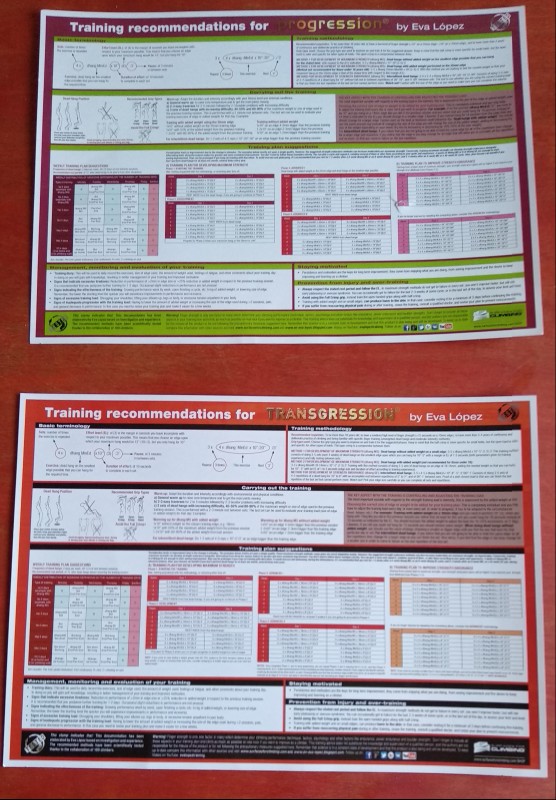Versión en español (original del 31 diciembre de 2010)
I'll try to answer this question with data gathered in a field study that I'm carrying out with the aim of finding in a scientific manner the basis for training in our sport. Researchers have suggested that one of the keys to an effective methodology is specificity. Part of this specificity is matching the work-rest pattern and physiological demands of that sport (Meckel et al., 2009; White & Olsen, 2010).
Video analysis and direct observation provide us with a great deal of useful information, and have been regularly used for a long time now when it comes to team sports. More recent is their application to individual sports similar to ours, those where the environment (outdoors) is not standardized and the effort is intermittent, like surfing (Mendez-Villanueva & Bishop, 2005).
 |
Dani Andrada."Era Bella", 9a. Margalef.
Picture: Bernardo Giménez. Source:www.desnivel.com
|
FIELD STUDY: Time-Motion Analysis of Rock Climbing, in the case of attempting a route previously practiced.
Materials and Methods
Participants: 3 male and 1 female climbers. Level from 8c to 9a
Materials: Chronometer, pencil, notebook
PROCEDURES: PROTOCOL FOR COLLECTING DATA
Methodology: Direct observation of each participant while the actual climb took place, or later on recorded video
Observed action: Attempts at sending a route that the participant had worked previously; the quickdraws were in place already. There were considered worth measuring those tries where the climbers had already optimized their methods and automated the sequences through previous work of the whole route (in eight occasions the data gathering coincided with the climber linking the route)
Routes: 15 routes from 8b to 9a across different climbing sites
Crags: Cuenca, Margalef (Tarragona), Oliana (Lleida), Oñate (Álava), Otiñar (Jaén), Rodellar (Huesca) and Villanueva de Valdegovía (Álava)
THE FOLLOWING VARIABLES were measured in this study:
- Climbing duration for each section of the route, a section being delimited by resting points or standing points
- Total climbing time: sum of all section durations. It is the total time spent progressing or ascending the route, and also clipping.
- Time at each resting point: this did not include resting on the harness after a fall. A resting point was defined as holding a "good" hold with the aim of lowering the fatigue caused by the previous section so that the climb can be prolonged.
- Total resting time: sum of all resting point times.
- Total stay on the route: total climbing time plus total resting time.
- Number of rest points
- Number of climbing sections
 |
| Petr Bláha resting on "Patate d'or" at La Turbie (Mónaco, France). Photo: Monika Knoppová. Source: Lezec.cz |
1- The shortest recorded stay duration was 5' 34'' on a strength-endurance route less than 25 m high; the longest was 35' 34'' on a route more than 30 m high, by a climber with more endurance than maximum strength.
Most of the climbs were between 8' and 25' (the average was 16' 18''±8' 33'')
2- During most of the climbs, 35% to 58% of the time was spent resting (average of total resting times = 46,6±12,2%)
3- The shortest total resting time was 1' 45'' (31,4% of the total stay time) on a strength-endurance route less than 25 m high; the maximum of 27' 50'' (78,3% of the total stay time) was recorded on a route longer than 30 m for a climber with more endurance than maximum strength
4- In most of the routes the number of resting points was 2-8 (the average was 5±3)
5- When comparing different climbers on the same route there is a great variability in the total resting time, according to each person's strength and endurance levels; this had a direct impact over the total stay time (pearson correlation = 0,95), and presumably over the final level of general fatigue
 |
| Dani Andrada on "La Esencia de la Resistencia", 8c+. Las Bruixas (Lleida). Picture: Pete O'Donovan. |
We must keep from extrapolating these data to the general climbing population and to every type of route: the sample of routes is tiny, and all the climbers are of a high level. Nonetheless, we can glimpse some fundamental ideas that arise from them:
1- Rock climbing is a sport with a intermittent or non-continuous character, where there is an alternance of:
- Displacement and standing phases: when progressing along the route or stopping to rest (on the wall) between sections.
- Intensities: In the same route we usually find a mix of easy, moderate and hard sections.
2- The total stay time during a sending attempt in some routes, can be long (up to 35 minutes) and the time spent resting between hard sections can be a high percentage of the total time (min 31%, max up to 78%)
Not to mention climbing onsight, or when we still don't know the route well and unclimb to then climb again until we are exhausted, or when fear or doubt arise... In these cases we can stay on the route much longer than what I described above, sometimes more than one hour!
Other climbers on other routes can experience the opposite, they do not have enough endurance and can't afford to stop between sections...like beginners.
 |
| Yuyi Hirayama on White Zombie, 8c. Baltzola (Guipuzcoa). Photo: desnivelpress.com |
All these characteristics of rock climbing should help us define our training.
So, if we stay for so long on a route, and much of that time we are trying to rest off a decent hold... and if we want to climb the easier sections without getting very pumped... then we need to develop the ability to do so.
We need to work on our local aerobic endurance**AKA Stamina, Aerobic Endurance, easy endurance, ARC...or in French: Continuité, and in Spanish: continuidad
So, if you are among those who climb at sites where routes tend to be long, or you don't have strength to spare and need to spend a lot of time resting because the harder sections feel really exhausting, I ask you:
Do you train it enough? or, better yet:
Are you really developing it when you think you are?
 |
| Tomáš Mrázek. World Cup, Imst (Austria) |
What's the total volume in minutes or movements that you perform during an typical endurance workout?
Do you know how long it takes to do the usual 20-30 movement set at the gym, neither clipping, nor slowing down at technical sections, and climbing sideways instead of upwards... what most of use to do?
... And then is the issue of how intense the set was, and how long the pause before the next one...
Perhaps it is due to a methodology or planning error (something we will look at in the future), or because we are simply not training it, that you spend weeks at the gym, thinking that your endurance must have improved, and then, when finally you can go to the crag... you realize that you don't only suffer from the lack of adaptation to the rock, where the holds are harder to see and smaller, but also that you get pumped very fast even though the individual moves feel really easy...
 |
| Eva López on Paraula de Stone, 7c+/8a. Montgrony. Picture by Dafnis Fernández |
Has this ever happened to you?
Update your training, your sensations, and draw your own conclusions.
If one key factor for an effective training is matching the characteristics of the sport it is oriented to, shouldn't we study our own climbs and the routes we want to climb so that we get a higher confidence that our training is well oriented?
So you know: you just need a stopwatch, a pencil and a notebook!
Happy analyzing and, with a bit of luck... happy insights!
NEXT ENTRIES:
Training Objectives and Basis for Periodization for Local Aerobic Endurance
Local Aerobic Endurance Training Methodology (I): How to develop Capacity
REFERENCES
- Meckel Y., Machnai O., & Eliakim A. (2009). Relationship among repeated sprint tests, aerobic fitness, and anaerobic fitness in elite adolescent soccer players. The Journal of Strength & Conditioning Research, 23(1), 163-169.
- Mendez-Villanueva A., Bishop D., & Hamer P. (2006). Activity Profile of World-Class Professional Surfers During Competition: Acase Study. The Journal of Strength & Conditioning Research, 20(3), 477-482.
- White D. J., & Olsen P. D. (2010). A time motion analysis of bouldering style competitive rock climbing. The Journal of Strength & Conditioning Research, 24(5), 1356-1360.







 https://orcid.org/0000-0003-0304-5290
https://orcid.org/0000-0003-0304-5290







